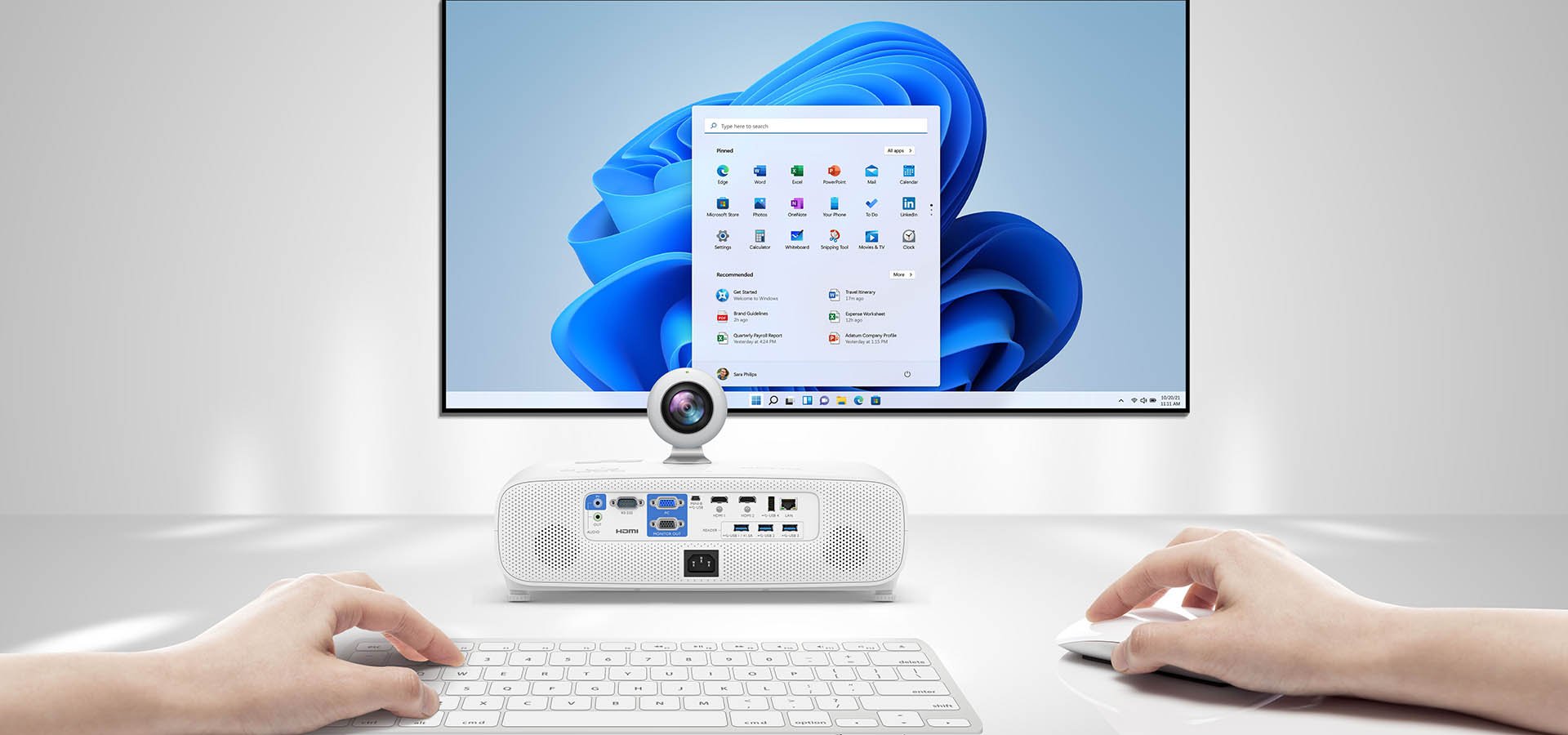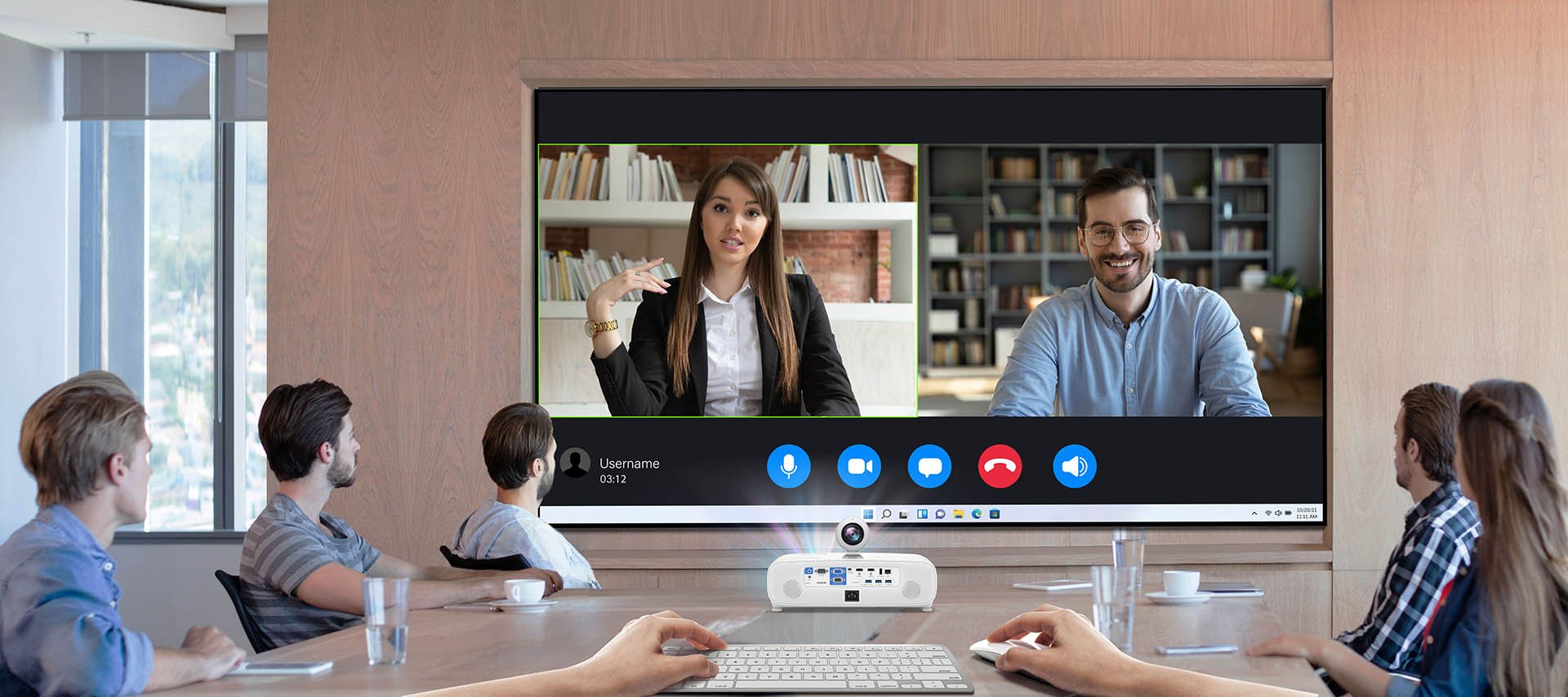How Upgrading to a Windows Projector Gives you an All-In-One Solution
- 2022-07-06


In the connected world the rapid pace of business requires that companies constantly think of ways to foster an atmosphere where collaboration and employee interaction is king. One of the methods some companies have found is to upgrade their conference rooms so that their meetings are more productive and the time spent there is focused solely on their teams’ discussions and the resulting synergy. Given that so many meetings revolve around sharing presentations and media, a recent solution that helps companies advance such ends is the Windows projector. What exactly is a Windows projector? What differentiates different models of Windows projectors? And what benefits does it provide the users and organizations who use it? This article will help introduce this new technology to the reader and answer these key questions, so that they can figure out if it’s a technology worth choosing for their enterprise.
What is a Windows Projector?
The question of what a Windows projector is, starts with a discussion of what a PC-less projector is. A PC-less projector is a projector where an operating system, generally Android or Windows, is built into the machine, bypassing the need to connect a separate PC to provide content. To complement its operating system, PC-less projectors typically feature pre-installed software and apps that allow it to perform a range of tasks from productivity-related jobs to streaming media. Furthermore, PC-less projectors are able to connect to the Internet, including via wireless connections, to access content on the web, download files located in the cloud, install additional software/apps, and to support wireless casting from BYOD mobile devices. With a range of PC-less projectors available to them, business users – particularly large businesses and corporations – have keyed in on Windows projectors as the most viable solution due to their compatibility with most office-related hardware and software, the familiarity and functionality of the Windows platform, and the strong security features incorporated into the operating system.
Whereas this article is focuses on solutions for business users, there are home entertainment PC-less projectors – most commonly known as smart or portable projectors – which tend to be powered by Android TV and mainly revolve around streaming apps.
Differentiating Between Windows Projectors
Each business has its own unique needs, which means that finding the right Windows projector is a process of picking and choosing among various options since not every organization will need the most top-of-the-line specs for their final choice. With that in mind, below are some of the key details that differentiate the various Windows projector on the market which the prospective buyer should look into when considering a model.
Purpose
As hinted at above, even though Windows projectors are favored by corporate users, they can also be used for home entertainment purposes, thus the market does feature hybrid models for entertainment and business use alongside strictly business use.
Windows Version
Given the different iterations of Windows released in recent years, there will be Windows projector models that feature each version of Windows available, including Windows 10 or 11, Windows Pro or Enterprise.
Compatibility with Accessories
Though the rise of the Windows projector was mainly fueled by the desire to remove the hassle of connecting a PC for content, in certain cases there will still be the need to connect some peripheral devices, such as a webcam, speakers, keyboard, or mouse. The extent to which a projector supports these connections, via physical or wireless/Bluetooth connections, is also an aspect that differentiates each model.
I/O Ports
Similar to what’s discussed above, there may still occasionally be the need to connect another device to provide content whether it be another laptop, media player, or a USB flash drive; the level of support each model provides will then depend on the availability and amount of input and output ports such as HDMI, USB, etc.
Wireless Casting Technology
When wireless connectivity is built-in, the question of the level of support for different wireless casting technology comes into play since casting may play a major role in how presenters are able to share content. With this in mind, a prospective user should look into whether technology such as AirPlay, Chromecast, Miracast, etc. is supported by each model they look at.

Whereas the discussion that began this article covered the overall benefits that PC-less projectors provide, Windows projectors also have their own distinct advantages for the user. Key amongst these advantages is the fact that as a device running Windows – the predominant operating system powering offices around the world – a Windows projector will be instantly familiar to any business/corporate user, meaning zero downtime spent getting the user familiar with the intuitive interface that Microsoft has spent generations refining.
Another of the benefits from using a Windows projector is that it allows organizations to leverage the power of the Windows platform to natively run the multitude of software that are used in hybrid meetings. By doing so you not only circumvent the need to bring various peripheral devices to the conference room in order to perform each specific task, but you also give the user the ability to customize the projector’s entire interface with business-related and/or meeting-centric software, applications, and websites, via Window’s desktop and shortcut capabilities. Moreover, by adding web connectivity into the mix you also get the increased benefit of accessing any and all types of cloud services so that migrating content, media, and/or files to and from each of the meeting participant’s personal workstation to the conference room is easy and seamless.

From an organizational standpoint the advantages of using a Windows projector goes beyond what only the user sees, as its use also provides IT departments with various benefits. This is due to the fact that by employing a Windows projector, an organization again leverages the power of the Microsoft platform, but this time in terms of security and management.
First among these benefits, is the direct utilization of all the robust security features embedded in the Windows operating system, from encryptions to passwords and beyond. Second, by transforming the projector into the hub of all operations within a conference room, a Windows projector makes centralized management and maintenance of a company’s equipment by IT personnel that much easier and effective compared to the traditional method of connecting various laptops to a conventional projector. Finally, in terms of economics, a full-featured Windows projector either reduces or eliminates entirely the costs associated with purchasing any additional equipment necessary to make presentations run smoothly in the traditional PC/projector setup, such as Wireless Presentation Systems (WPS).
How the EH620 is the Ideal Projector Upgrade for Corporate Clients
Understanding all the different ways in which a Windows projector makes a corporate conference room and its collaborative work go smoother, BenQ has specially designed its EH620 Windows projector to hit all the benchmarks of a high performing all-in-one solution.
The EH620 is a high-brightness projector with the Windows 11 operating system built-in, meaning all the above-mentioned benefits are fully integrated into its system. Beyond the overall advantages that a Windows projector brings, the EH620 also includes 4GB of RAM to bolster its system’s performance, two HDMI input ports to connect additional audio/video devices, and three USB 3.0 ports that are also capable of power delivery to charge connected devices. On the non-hardware side of things, the EH620 features wireless connectivity that also supports multiple types of wireless casting, such as Miracast, Airplay, BenQ’s InstaShare, and Chromecast (available in future updates).
For IT personnel the EH620 adds a recovery function to restore the system in case of major system failure. Another example of how the EH620 stands out from the crowd is the way in which its seamlessly blends the projector side of its functionality into the workings of its Windows system so that adjusting the projector’s settings (such as switching picture modes or increasing/decreasing its brightness) can be done within the Windows interface, avoiding the need to interrupt any concurrent presentations. And finally for a truly all-in-one experience, the EH620 also includes features that allow it to easily transition between being a business projector and a projector used for entertainment purposes, such as custom picture and sound modes for each type of use with additional auto-switching capabilities for its sound modes so that anytime the picture mode is switched over the corresponding sound mode automatically follows suit.